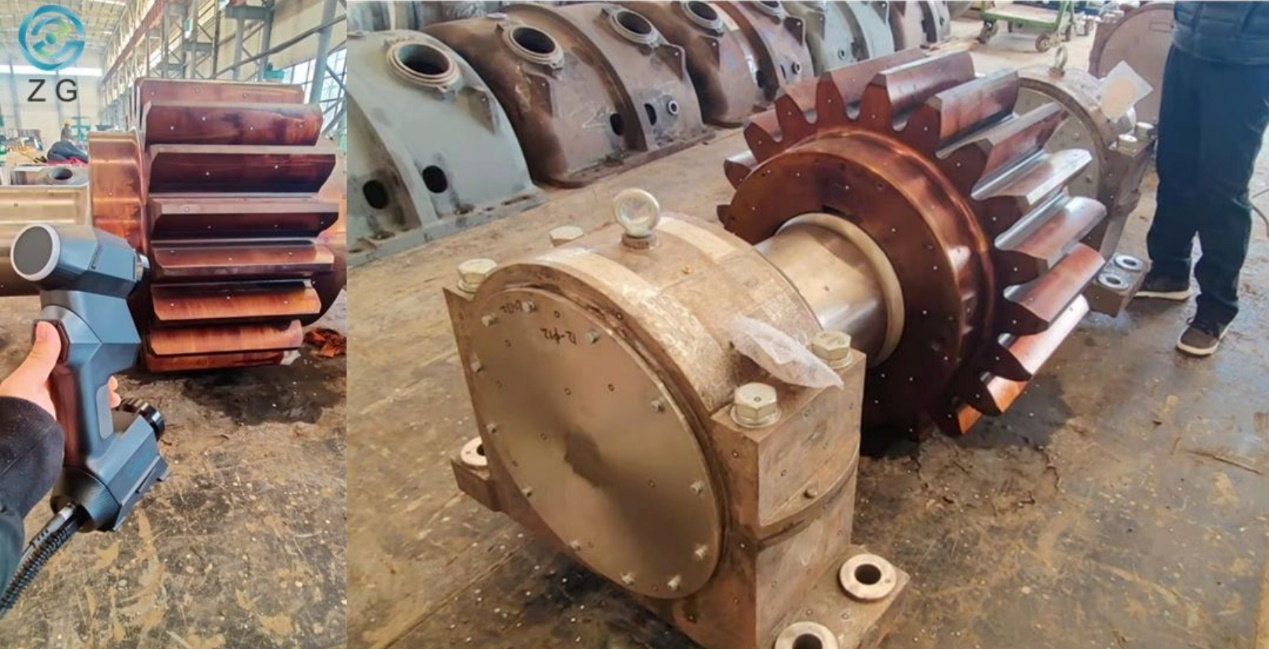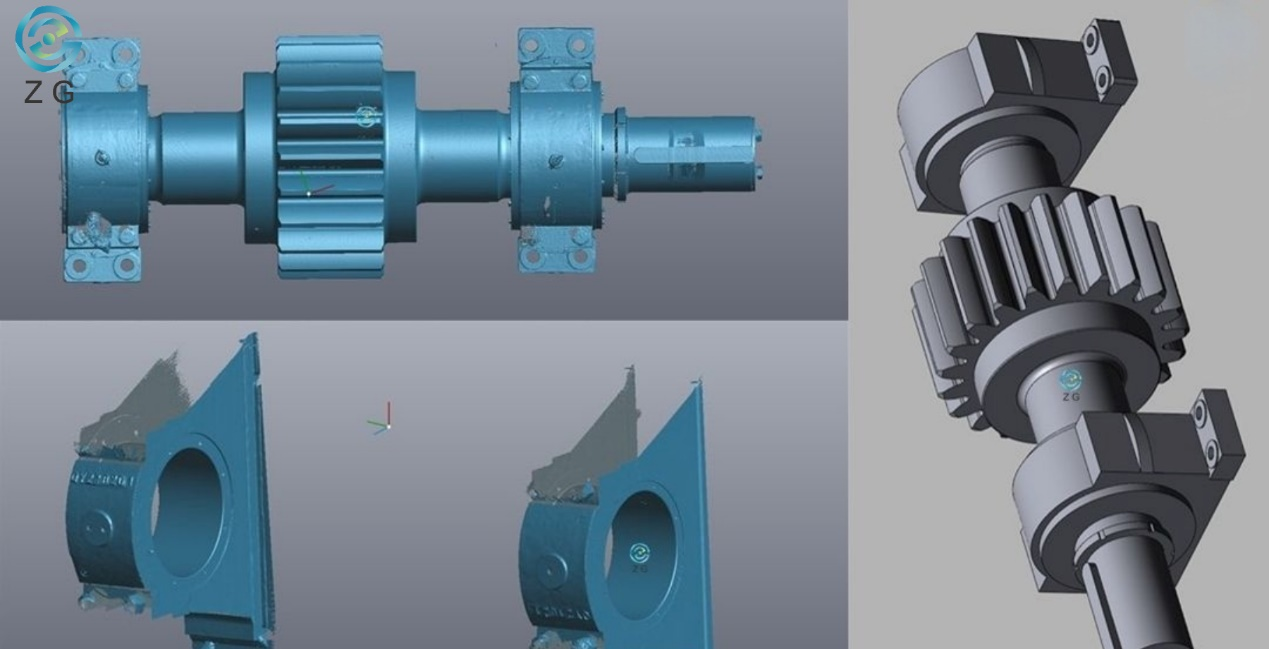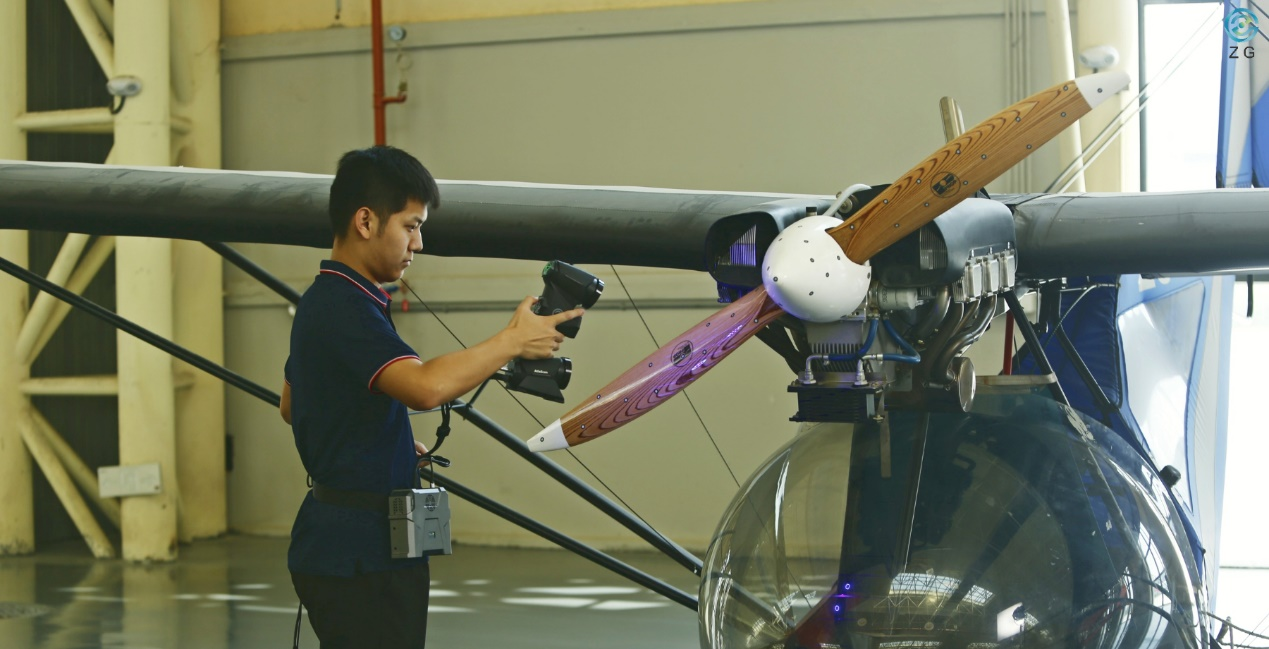Table of Contents:
What is reverse engineering?
What is the reverse engineering process?
What are the uses of reverse engineering?
How can ZG's 3D scanners speed up reverse engineering.
More to expect.
What is reverse engineering?
Reverse engineering (also known as backwards engineering or back engineering) is often heard in our work, it's a method of making a 3D virtual model from an existing physical part for use in 3D computer-aided design (CAD), computer-aided engineering (CAE), computer-aided manufacturing (CAM), or other design software. The process involves measuring an object, either manually or with cutting edge 3D measurement technologies like 3D scanners, to reconstruct it to a solid 3D model.
Reverse engineering is helpful in various ways such as analyzing product functionality & subcomponents, estimating costs, and identifying potential patent infringement. It may also be used to supply documentation that was either lost or never written, typically for parts designed before CAD software became widespread.
The physical features of the surface of an object can be measured by 3D scanning technologies like handheld 3D scanners, coordinate measuring machines (CMMs), and articulated portable arms. Usually represented as a point cloud, the measured data lacks topological information, so it is often processed into a triangular-faced mesh (STL) file and then modeled into a more usable format such CAD model.
What is the reverse engineering process?

Why does a manufacturer need to reverse engineer something? To reproduce a component to analyze why the part doesn't work, to modify or enhance an existing tooling, or to find out the reason why there are issues with an assembly? It is necessary for a manufacturer to figure out its exact needs before beginning a reverse engineering project.
Before the reverse engineering process, the manufacturer must decide which 3D measurement technology should be used first. For this explanation, let's take ZG's portable 3D scanner AtlaScan for example.
Firstly, the technician will make some preparation for the part to be scanned, such as to place markers on the surface. Then, the technician will start the scanning process, to scan the part that needs to be recreated, capturing all the dimensions and details.
After the scanning process, the scan data is post processed to the universal format either a mesh or point cloud in ZG scanning software, which will help to clean, repair and refine the data. The mesh or point cloud scan data will be imported into CAD software such as Design X, SOLIDWORKS or Siemens NX, and then an industrial designer or expert of reverse engineering can then create the 3D model and make any changes as required.
The manufacturer can use a 3D printer to produce a prototype of the 3D model quickly, then the expert can assess whether the 3D model can meet their requirements, if not, the 3D model can be modified no matter how many times until satisfactory. Once the ideal 3D model has been created, the manufacturer can produce parts either as a one-off or batch production.

Large Casting Part Ready to Be Reverse Engineered

3D Scanned Data and CAD Model
What are the uses of reverse engineering?
Reverse engineering is widely used in various industries, such as automobile industry, aerospace industry, tooling companies, art and heritage preservation, etc. Reverse engineering processes can help manufacturers to optimize their production, gain a competitive edge and cut costs.
Below are some of the most common uses of reverse engineering:
1. Legacy Parts Replacement
As one of the most common reverse engineering applications, legacy parts replacement involves examining and reproducing select parts of larger machines to keep them in operation.
For example, a factory might have a large engine compartment that keeps the entire conveyor system running through each day's work shift. Every once in a while, one of the machine parts will wear out and need to be replaced. And certain parts might no longer be in production if the machine is old.
Rather than making a huge investment in a new conveyor system, the preferable option for the manufacture is to retain the same equipment and replace the faulty part. With reverse engineering, you can use a ZG's 3D scanner to digitally replicate the design of the defective part. From there, a new copy of the component can be created and installed into the machine.
2. Failure Analysis
Reverse engineering techniques can play a valuable role in failure analysis. You may need to take it apart or examine design files to determine to figure out why a machine fails. You can know how to fix or improve the product once you have this information, and it will function properly again.
Examining a product using reverse engineering can reveal damaged parts of faulty designs. Looking at digital design files created through reverse engineering can also reveal flaws and help inform how you plan to repair a piece of equipment.
3. Parts Improvement
It's not surprising that reverse engineering can also be used for parts improvement. After conducting a failure analysis, you might need to alter a component. You could have the part reverse engineered to create a copy of the original design if no replacement or alternative part is available on the market. From there, you could modify the design for improved performance.
If stronger joints or weld reinforcements is required for a machine, the problem parts will be examined for their measurements and redesigned with increased thickness or stronger metals. You can determine which dimensions must be maintained and which aspects you can change through reverse engineering. If you want to combine two or more parts into a single and more functional component, reverse engineering could bring that fact to light.
4. Diagnostics and Problem-Solving
Reverse engineering also plays a vital role in diagnostics and problem-solving in different industrial processes. In a factory setting, the flow of operations can sometimes go slow due to a faulty or underperforming function. And it will be difficult to find out the source of the problem when a manufacturing system consists of numerous machines and components. Through reverse engineering, you can have a thorough understanding of how everything works as one and use that knowledge to identify where the problems are.

AtlaScan Scanning Process 1
How can ZG's 3D scanners speed up reverse engineering?
Accurate and efficient, contrary to manual methods and other 3D measurement technologies, ZG's portable 3D scanners significantly speed up the reverse engineering process.
1. High portability and easy-to-use:
---little preparation is needed before the scanning process
---it can be used right on the production floor
---it can be used by operators of any skill level
2. High speed:
---millions of data points can be captured per second
---a scan-to-mesh can be achieved in seconds
3. High accuracy:
---regardless of the complexity of a part's geometry
---regardless of the intricacy of a part’s surface
---the accuracy can be up to 0.01mm
With these features, ZG's 3D scanners can amazingly speed up the reverse engineering process to another level.

AtlaScan Scanning Process 2
More to expect
It is undeniable that reverse engineering has a bright and promising future. Reverse engineering workflows will become even more efficient and sophisticated as technological innovations continue in both 3D measurement equipment and reverse engineering software. ZG will also continue to improve and become more trustworthy for customers.






